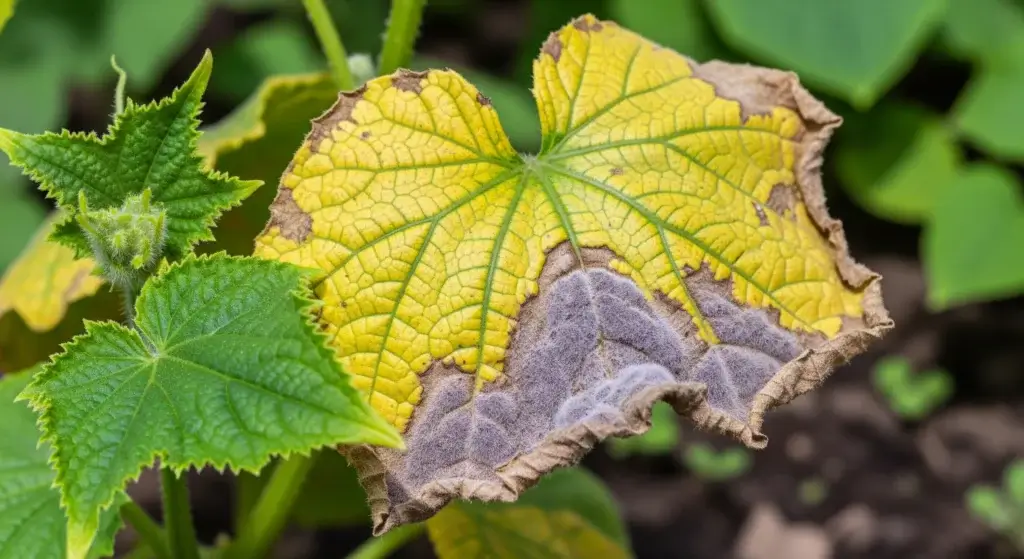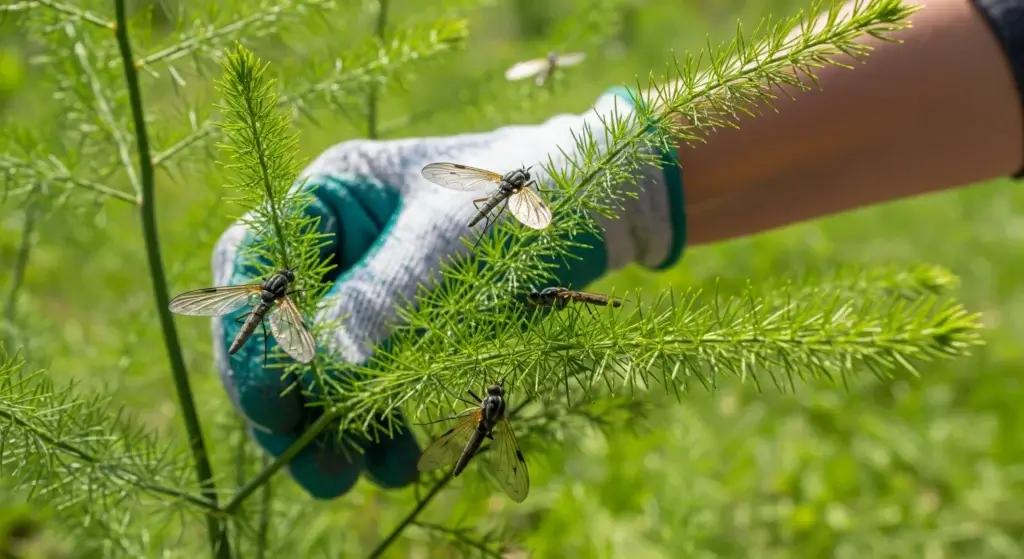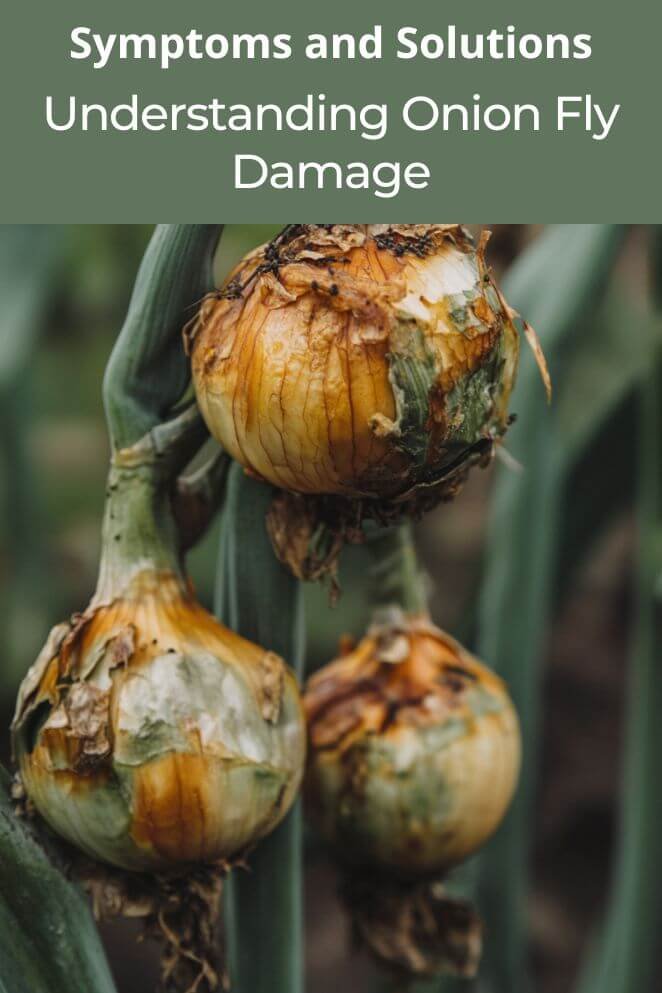
If you’re an onion grower, there’s one tiny pest you should be aware of: the onion fly.
Although small in size, the onion fly can cause significant damage to onion crops if left unchecked.
The larvae of these flies feed on onion bulbs, leading to poor growth, rotting, and in severe cases, crop loss.
This blog post will cover everything you need to know about onion fly damage, from signs of infestation to effective prevention and control methods.
Signs and Symptoms of Onion Fly Infestation
The onion fly, scientifically known as Delia antiqua, looks very similar to a common housefly but is responsible for far more destruction in your garden.
To protect your onion crops, early detection is crucial.
Here are some key signs and symptoms of an onion fly infestation:
Wilting and yellowing leaves
One of the first signs of an onion fly infestation is when your onion plants start to wilt and their leaves turn yellow.
This happens because the larvae, or maggots, are eating away at the roots and bulbs, cutting off the plant’s access to water and nutrients.
Soft, rotting bulbs
When you pull up an onion plant and find the bulb is mushy or rotten, this is a telltale sign of onion fly larvae feeding inside.
You may also notice small tunnels burrowed into the bulb where the larvae have been active.
Visible larvae
If you see small, white maggots (onion fly larvae) in the soil around your plants or inside the bulbs, you’re dealing with an active infestation.
These larvae are about 8 mm long and can destroy an onion bulb from the inside out.
Poor growth
If your onions seem stunted or are not growing at a normal rate, it could be because the larvae are feeding on the roots and preventing the plant from developing fully.
Onion fly larvae can destroy up to 50-90% of an untreated crop, depending on the severity of the infestation, according to research published by the Journal of Economic Entomology.
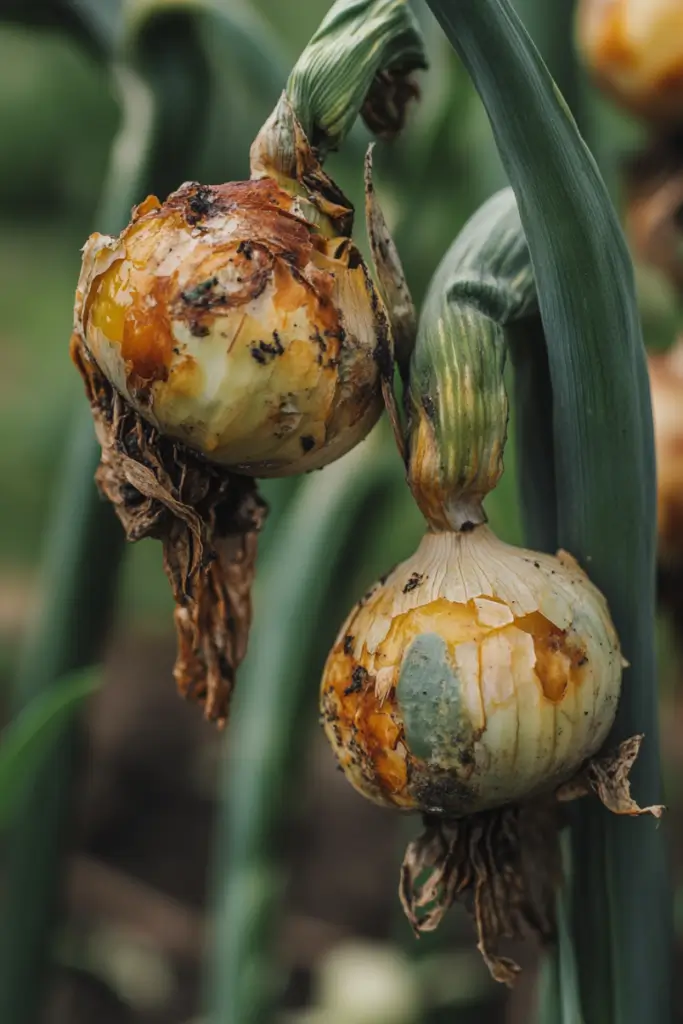
Preventing Onion Fly
Prevention is always better than trying to manage an established infestation.
Implementing several proactive measures can help protect your onion crops from onion flies.
Cultural practices
Cultural control methods involve modifying your gardening practices to reduce the risk of pest infestations.
Here’s how you can prevent onion fly problems with cultural practices:
Crop rotation
Avoid planting onions in the same spot year after year.
Rotating your crops means the onion fly larvae are less likely to survive in the soil.
By the time you plant onions in that area again, the pests may have moved on, or their life cycle will have been disrupted.
Proper spacing
Give your onions enough space to allow for good air circulation.
Onion flies thrive in moist, compact areas.
By spacing your plants properly, you can reduce the humidity around them, making the environment less attractive to these pests.
Timely harvest
Harvest your onions as soon as they’re mature.
Leaving them in the ground for too long can invite pests, including onion flies.
A timely harvest helps reduce the risk of infestation.
Physical barriers
Physical barriers are a simple yet highly effective way to stop onion flies from laying eggs in your garden.
Here are two easy methods to protect your onions:
Row covers
Cover your onion plants with fine mesh or row covers to keep onion flies from landing on them.
These barriers act as a physical shield, preventing flies from laying eggs.
Be sure to secure the covers tightly around the edges so no flies can sneak in.
Mulching
Laying down a thick layer of mulch around your onions can keep onion flies away from the soil.
Organic mulches like straw or grass clippings not only help keep pests at bay but also improve soil health, making your plants stronger and more resistant to pests.
Beneficial insects
One natural way to protect your onions from damage is by attracting beneficial insects that prey on onion flies and their larvae.
These helpful bugs can reduce onion fly populations without the need for harmful chemicals.
Here are two types of beneficial insects you can encourage in your garden:
Predatory beetles
Ground beetles are fantastic allies in the fight against onion fly larvae.
They feed on the larvae in the soil, helping to keep their numbers in check.
To attract these beetles, create a diverse garden environment with a variety of plants.
A mix of flowers, herbs, and vegetables can make your garden more inviting for these helpful insects.
Parasitic wasps
Some types of parasitic wasps are natural enemies of onion flies.
These wasps lay their eggs inside onion fly larvae.
When the wasp larvae hatch, they feed on the onion fly larvae from the inside, effectively controlling their population.
To draw in these beneficial wasps, consider planting flowers like dill and fennel, which they find particularly attractive.
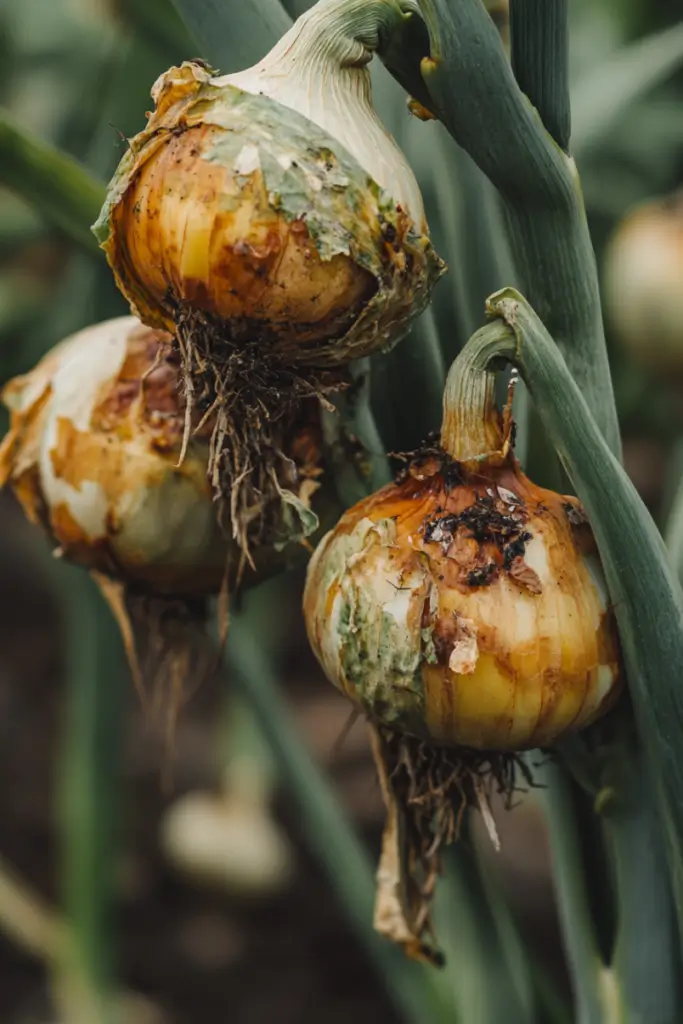
Chemical Control of Onion Flies
While many gardeners lean towards natural pest control methods, there are times when an onion fly infestation becomes serious enough to require chemical insecticides.
If you find yourself in this situation, it’s crucial to use these chemicals responsibly and only as a last resort.
Here are some options to consider:
Insecticidal sprays
Pyrethroid-based insecticides are commonly recommended for tackling onion flies.
These sprays work by paralyzing the nervous system of the flies, which stops them from reproducing and helps control their population.
When using these sprays, be sure to follow the instructions on the label carefully to ensure effectiveness and safety.
Soil drenches
Applying insecticidal soil drenches can effectively kill the larvae lurking in the soil before they have a chance to damage your onions.
Again, it’s important to closely follow the product’s label instructions to avoid harming beneficial insects that are vital for a healthy garden.
Organic options
If you prefer to stick with organic farming practices, neem oil is an excellent choice.
This natural solution disrupts the lifecycle of pests, preventing them from maturing and reproducing.
While neem oil might not be as powerful as some chemical insecticides, it’s a safer alternative for your garden’s ecosystem.
Integrated Pest Management (IPM)
For the most effective and sustainable control of onion flies, consider adopting an Integrated Pest Management (IPM) approach.
This strategy combines various methods to manage pests while minimizing the use of harmful chemicals. Here’s how to implement IPM for your onion crops:
Monitoring
Regularly check your crops for early signs of onion fly activity.
By keeping a close watch on your plants, you can detect infestations sooner, making it easier to manage them before they cause significant damage.
Biological control
Encourage beneficial insects in your garden to help control pest populations naturally.
Introducing or maintaining predators like ground beetles and parasitic wasps is an eco-friendly way to keep onion flies in check.
These “good” bugs can help reduce the number of onion flies without harming your plants.
Chemical use
Only resort to using insecticides when other methods have proven ineffective.
When you do use chemicals, always opt for the least toxic option available.
Rotating between different insecticides can also help prevent onion flies from developing resistance to any one treatment.
Cultural practices
Maintain good gardening habits, such as rotating your crops and ensuring proper plant spacing.
These practices can help reduce the risk of onion flies becoming a recurring issue in your garden.

Final Thoughts
Onion fly damage can be devastating to your onion crops, but with proper prevention and management strategies, you can significantly reduce their impact.
By using a combination of cultural practices, physical barriers, beneficial insects, and chemical controls (if needed), you can protect your onions from these pesky pests.
Remember, early detection is crucial—so keep an eye on your plants and take action at the first sign of trouble.


